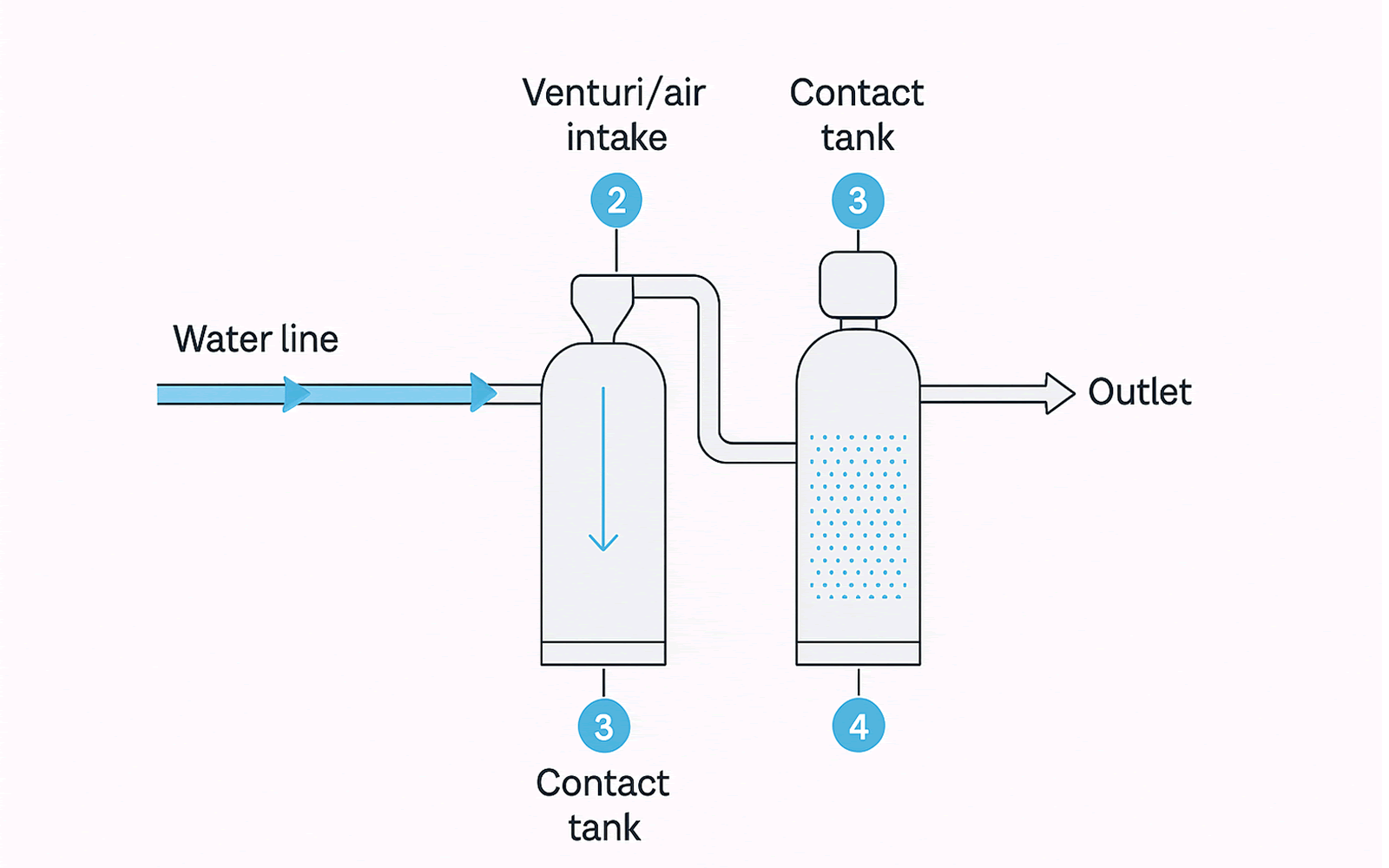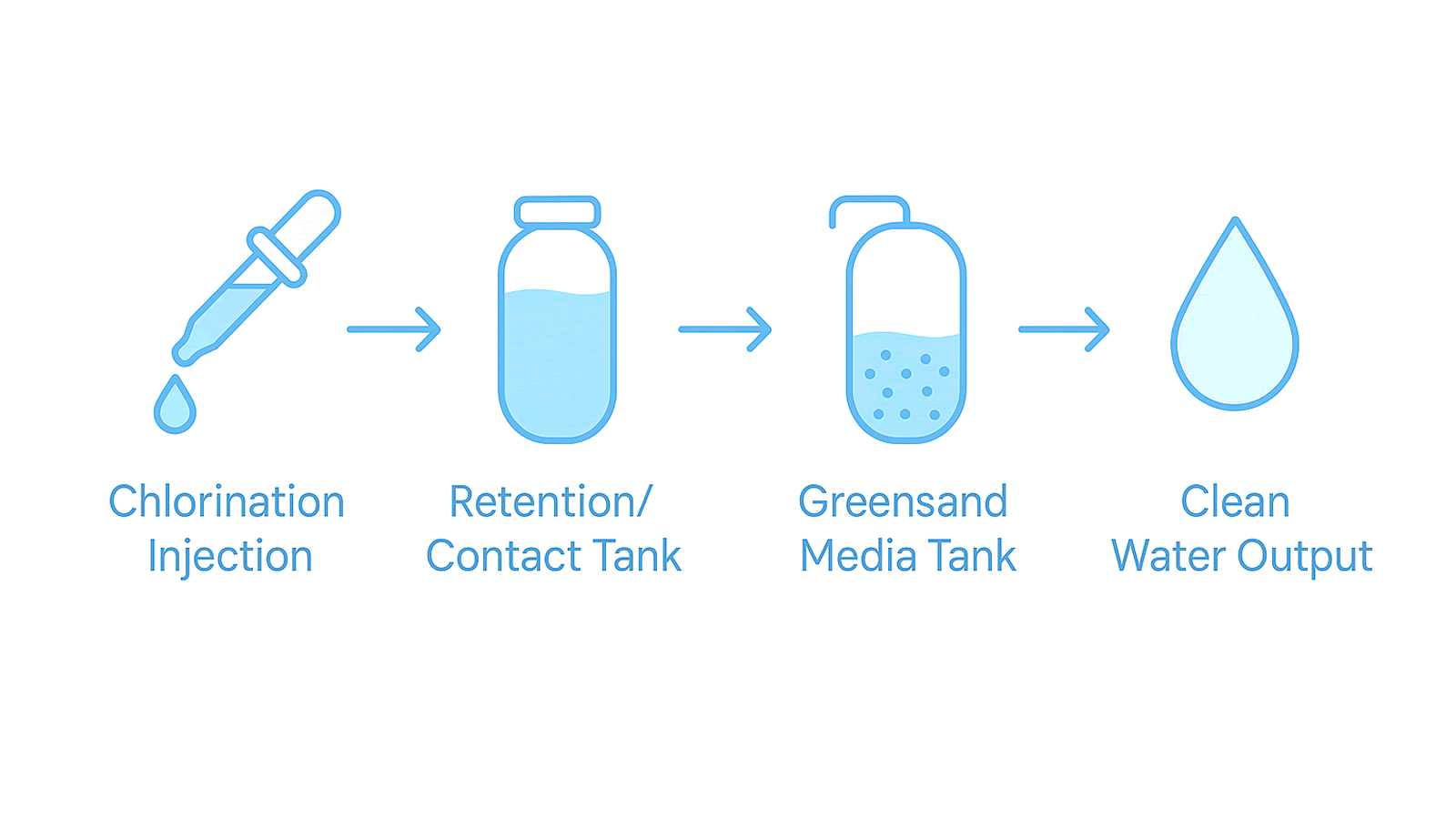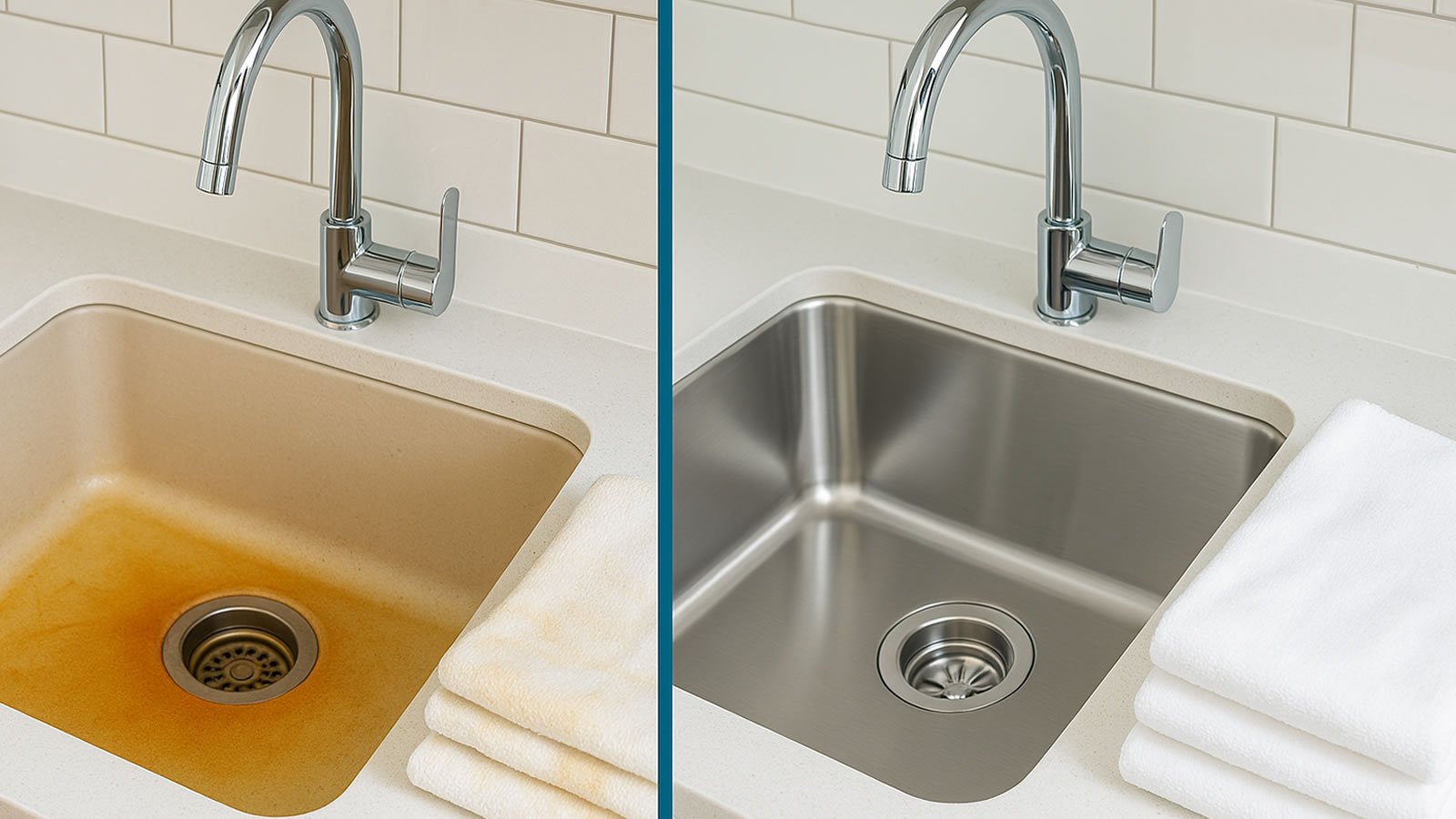1. Water Softeners (Ion-Exchange Systems)
These are a classic choice—especially when your well water has moderate iron levels. They replace calcium, magnesium, and low-to-moderate iron concentrations with sodium or potassium ions, softening the water and preventing scale buildup.
Pros
- Affordable and widely available.
- Adds smooth, soap-friendly water to your home.
Cons
- Not effective for high iron concentrations (typically above ~8 ppm).
- Adds sodium to your water—not ideal for sodium-restricted diets.
- Doesn’t tackle iron bacteria or odor issues effectively.
2. Hydrogen Peroxide Injection Systems
A powerful chemical oxidizer that transforms dissolved ferrous iron into insoluble ferric particles—which can then be filtered out. It also tackles sulfur odors and iron-feeding bacteria, and breaks down harmlessly into water and oxygen.

Pros
- Works fast and across a broad pH range.
- No lingering taste, odor, or chemical residue—just clean water.
- Great for iron bacteria, odors, and high iron (even up to ~20 ppm).
Cons
- Higher upfront cost compared to softeners.
- Requires periodic peroxide refills.
- System must be properly engineered for your water chemistry.
3. Air (Oxidizing) Injection Filters
These systems inject air into the water to oxidize iron before filtration. The resulting rust particles are trapped in the filter media for easy removal.

Advantages
- Chemical-free method—ideal if you'd rather avoid additives.
- Works equally well with ferrous and ferric iron.
- Low-maintenance after setup.
Drawbacks
- Higher initial investment.
- Performance can vary depending on oxygen levels and water flow.
4. Greensand (and Related) Oxidizing Filters with Chlorination
Specialized media like greensand, often paired with chlorine injection, can reliably remove iron and manganese and neutralize iron bacteria. With proper maintenance, these setups can last well over a decade.

Pros
- Pro-grade reliability and longevity.
- Excellent for iron, manganese, and bacteria in one system.
Cons
- Requires handling and replenishing chlorine.
- Needs regular backwashing and maintenance.
- May leave trace chlorine odor if not properly managed.
5. Phosphate Sequestration
Polyphosphates bind with iron to prevent staining without removing it, primarily controlling cosmetic issues.
Pros
- Easy to install and maintain.
- Keeps laundry and fixtures stain-free.
Cons
- Iron remains in the water—can impact taste or clog appliances over time.
- Overuse of phosphate may lead to slippery water or gastrointestinal upset.
Quick Comparison
| Method | Best For | Key Drawbacks |
|---|---|---|
| Water Softener | Low–moderate iron, general scale | Not for >8 ppm iron; adds sodium |
| H₂O₂ Injection | High iron, bacteria, odors | Cost, maintenance, fuel supply |
| Air Injection Filter | Chemical-free oxidation | Initial cost, variable effectiveness |
| Greensand + Chlorine | Heavy-duty iron/manganese removal | Maintenance, chlorine handling |
| Phosphate Sequestration | Preventing stains | Does not remove iron, dosing concerns |

Next Steps: Get Crystal Clear Water
- Test your water—check iron levels, presence of bacteria, sulfur odor, and pH.
- Match your treatment method to your problem:
- Stubborn iron or bacteria: choose H₂O₂ systems or greensand filters.
- Budget-friendly staining solutions: consider a softener (if iron is low) or phosphate feeder.
- Prefer chemical-free? Try an air injection system.
- Consult a pro to evaluate flow rates and design for longevity and efficiency.
Additional Insights
Iron bacteria: These microbes create reddish slime and clog systems. Physical removal may not suffice—oxidizing treatments (H₂O₂, greensand, air) are often needed.
Laundry stains: Combining treatment with non-precipitating softeners or commercial rust removers can help prevent or manage stains.
Bottom line
- Start with a proper water test to pinpoint iron type/level and any odor/bacteria.
- Pick the system that matches your severity and preferences (chemical‑free vs. oxidizer).
- Get a pro design to ensure flow‑rate performance and long‑term reliability.
